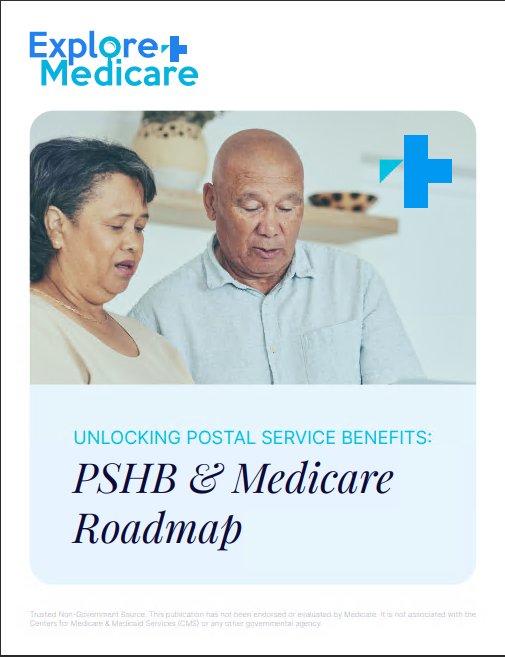Key Takeaways
-
Medicare is a federal health insurance program primarily for people aged 65 and older, but others with disabilities or specific conditions can qualify.
-
Understanding Medicare’s parts, costs, and enrollment periods can help you make informed decisions and avoid late penalties.
What You Should Know Before Signing Up for Medicare
Medicare can be confusing, and if you’re nearing eligibility, you’re probably trying to figure out what’s covered, what it costs, and when you need to sign up. While Medicare offers essential healthcare coverage for millions of Americans, missing a key enrollment deadline or misunderstanding your options can cost you. Here’s what you need to know before enrolling.
Who Is Eligible for Medicare?
Medicare is primarily for individuals aged 65 and older, but others can qualify under certain conditions. You’re eligible if you:
-
Are 65 or older and a U.S. citizen or permanent legal resident for at least five years.
-
Have received Social Security Disability Insurance (SSDI) for 24 months.
-
Have End-Stage Renal Disease (ESRD) or Amyotrophic Lateral Sclerosis (ALS).
If you qualify based on age, you can enroll starting three months before your 65th birthday. If you qualify due to a disability, you’re typically enrolled automatically after 24 months of receiving SSDI benefits.
Understanding Medicare’s Four Parts
Medicare is divided into four parts, each covering different aspects of healthcare:
Medicare Part A (Hospital Insurance)
-
Covers inpatient hospital stays, skilled nursing facility care, hospice, and some home health services.
-
Most people don’t pay a premium if they or their spouse worked and paid Medicare taxes for at least 10 years.
-
Deductibles and coinsurance apply.
Medicare Part B (Medical Insurance)
-
Covers outpatient care, doctor visits, preventive services, and durable medical equipment.
-
Requires a monthly premium, which is based on income.
-
Has an annual deductible and typically covers 80% of approved services, leaving you responsible for the remaining 20%.
Medicare Part C (Medicare Advantage)
-
Offered by private insurers as an alternative to Original Medicare (Parts A and B).
-
May include additional benefits such as dental, vision, hearing, and wellness programs.
-
Costs and coverage vary by plan and provider.
Medicare Part D (Prescription Drug Coverage)
-
Helps cover prescription drug costs.
-
Plans are offered by private insurers and have different formularies (lists of covered drugs), premiums, and cost-sharing structures.
-
Includes an annual deductible and copayments or coinsurance.
Medicare Enrollment: When and How to Sign Up
Signing up at the right time is crucial to avoid penalties and gaps in coverage. Here are the key enrollment periods:
Initial Enrollment Period (IEP)
-
Lasts for seven months: begins three months before your 65th birthday, includes your birthday month, and ends three months after.
-
If you miss this period, you may have to wait until the next General Enrollment Period and face late penalties.
General Enrollment Period (GEP)
-
Runs January 1 to March 31 each year.
-
Coverage begins July 1 of that year.
-
A late enrollment penalty may apply if you delayed signing up for Part B without qualifying for a Special Enrollment Period.
Special Enrollment Periods (SEP)
-
If you’re still working and have employer-sponsored coverage, you may delay Medicare enrollment without penalty.
-
SEP allows you to enroll outside the standard periods if you lose employer coverage or experience certain life events.
Annual Enrollment Period (AEP)
-
Runs from October 15 to December 7 each year.
-
You can switch, join, or drop Medicare Advantage and Part D plans.
-
New coverage takes effect January 1 of the following year.
What Medicare Doesn’t Cover
While Medicare covers a wide range of healthcare services, it doesn’t pay for everything. Here are some expenses Medicare typically doesn’t cover:
-
Routine dental, vision, and hearing care
-
Long-term care (custodial care in a nursing home)
-
Cosmetic surgery
-
Acupuncture (except for certain conditions like chronic low back pain)
-
Most prescription drugs (unless you have Part D coverage)
You may need additional coverage to help pay for these costs, such as a separate dental or vision plan or a supplemental insurance policy.
Understanding Out-of-Pocket Costs
Even with Medicare, you’ll have costs such as premiums, deductibles, copayments, and coinsurance. Here’s a general breakdown:
-
Part A: Premium-free for most people, but deductibles and coinsurance apply.
-
Part B: Monthly premium, annual deductible, and 20% coinsurance for most services.
-
Part D: Premium, deductible, and cost-sharing for prescriptions.
If you need help with costs, programs like Medicaid, Extra Help, or Medicare Savings Programs may assist with premiums and other expenses.
Avoiding Medicare Late Enrollment Penalties
Missing your enrollment window can lead to costly penalties. Here’s how they work:
-
Part A Late Penalty: If you have to buy Part A and don’t sign up when first eligible, your premium may increase by 10% for twice the number of years you delayed.
-
Part B Late Penalty: Your monthly premium may go up by 10% for every 12-month period you were eligible but didn’t enroll.
-
Part D Late Penalty: If you go 63 days or more without prescription drug coverage after becoming eligible, you’ll pay a penalty for as long as you have Part D.
Getting Help with Medicare Decisions
Understanding Medicare can be overwhelming, but you don’t have to navigate it alone. Speaking with a licensed agent can help you compare options, understand costs, and ensure you enroll in the right coverage for your needs. Agents listed on this website can provide expert guidance tailored to your situation.







